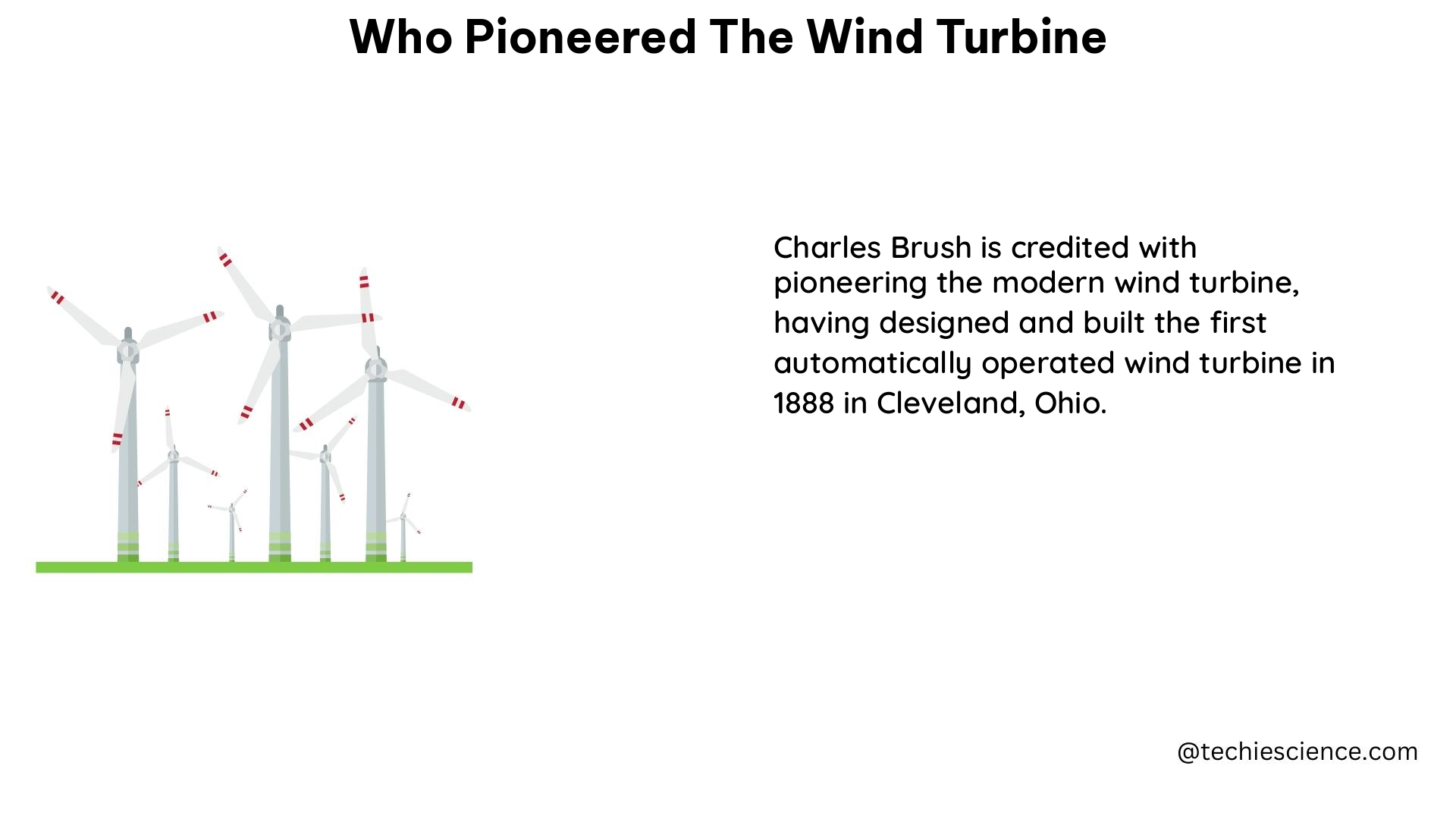The pioneering work of Professor James Blyth of Anderson’s College in Glasgow, UK, marked the beginning of wind energy technology. In 1887, Blyth constructed the first known wind turbine, which stood 10 meters tall and was installed in the garden of his holiday home in Scotland. This groundbreaking invention paved the way for the development of wind power as a viable source of renewable energy.
Blyth’s Wind Turbine: A Landmark Innovation
Professor James Blyth’s wind turbine was a remarkable feat of engineering for its time. The turbine had a rotor diameter of 7 meters and was designed to generate electricity by charging a set of accumulators developed by chemical engineer Camille Alphonse Faure. These accumulators were then used to power the lighting in Blyth’s holiday cottage, making it the first house in the world to be powered by wind energy.
Technical Specifications of Blyth’s Wind Turbine
- Rotor Diameter: 7 meters
- Tower Height: 10 meters
- Electrical Generation Capacity: 1.5 kW
- Power Transmission: Mechanical drive to charge accumulators
- Energy Storage: Faure’s accumulators for later use
Blyth’s wind turbine was a significant technological advancement, as it demonstrated the feasibility of using wind power to generate electricity for residential applications. The ability to store the generated energy in batteries for later use was a crucial feature that highlighted the practical potential of wind energy.
The Impact of Blyth’s Pioneering Work

Blyth’s invention marked a pivotal moment in the history of renewable energy. His wind turbine not only powered his own holiday cottage but also paved the way for the development of larger-scale wind energy systems. The success of his project inspired others to explore the potential of wind power, leading to further advancements in wind turbine design and technology.
Milestones in the Evolution of Wind Turbines
- 1887: James Blyth builds the first known wind turbine in Scotland, with a capacity of 1.5 kW.
- 1891: Poul la Cour, a Danish scientist, develops the first wind turbine designed for electricity generation, with a capacity of 10 kW.
- 1941: The first megawatt-scale wind turbine, the Smith-Putnam wind turbine, is installed in Vermont, USA, with a capacity of 1.25 MW.
- 1970s: The oil crisis spurs renewed interest in wind energy, leading to the development of larger, more efficient wind turbines.
- 1980s: The modern wind turbine industry takes shape, with the introduction of advanced blade designs and control systems.
- 2000s: Wind turbine technology continues to evolve, with the development of larger, more powerful turbines capable of generating several megawatts of electricity.
Today, wind energy has become a major source of clean, renewable electricity worldwide, with a global installed capacity of over 800 GW as of 2021. This remarkable growth can be traced back to the pioneering work of Professor James Blyth and his groundbreaking wind turbine invention.
Conclusion
The story of Professor James Blyth and his wind turbine invention is a testament to the power of innovation and the transformative potential of renewable energy technologies. Blyth’s work laid the foundation for the wind energy industry, paving the way for the development of larger, more efficient wind turbines that are now playing a crucial role in the global transition to a sustainable energy future.
Reference:
– National Renewable Energy Laboratory (NREL) – Wind Data and Tools
– Inspire Clean Energy – Who Discovered Wind Energy?
– Wikipedia – Wind Turbine

The lambdageeks.com Core SME Team is a group of experienced subject matter experts from diverse scientific and technical fields including Physics, Chemistry, Technology,Electronics & Electrical Engineering, Automotive, Mechanical Engineering. Our team collaborates to create high-quality, well-researched articles on a wide range of science and technology topics for the lambdageeks.com website.
All Our Senior SME are having more than 7 Years of experience in the respective fields . They are either Working Industry Professionals or assocaited With different Universities. Refer Our Authors Page to get to know About our Core SMEs.